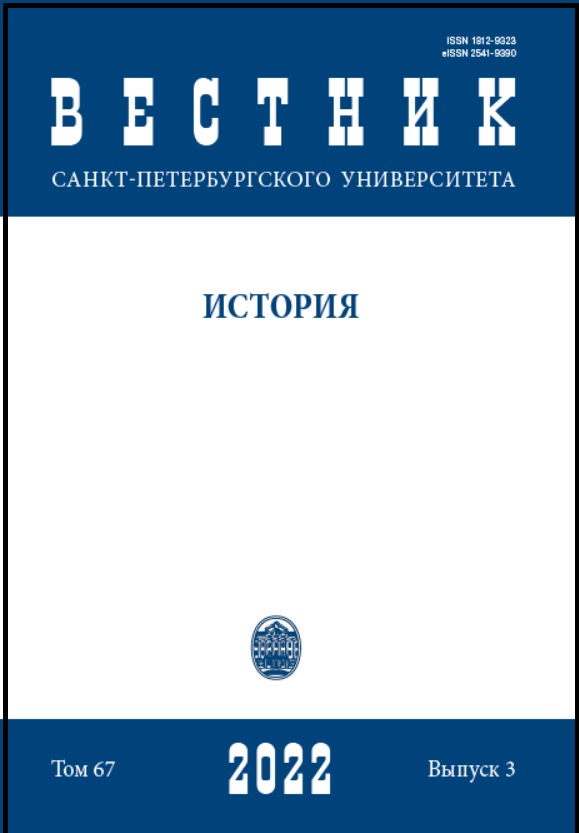Phrygia According to the Works of Khorenatsi and Shirakatsi
DOI:
https://doi.org/10.21638/spbu02.2022.307Abstract
“Ancient Armenian Geography” (or “Ashkharatsuits”, literally — “World Map”) calls Phrygia the fifth among all the countries of Universal Asia, which is located between Lycia and Paphlagonia. Partly based on “The Geography” by Ptolemy, “Ancient Armenian Geography” complements the Greek author with its information. Outlining the borders of Phrygia, “Ashkharatsuits” shows the territorial limits that this state reached in the first half of the I millennium BC (especially in the 8th–6th centuries). These centuries can be characterized as the “golden era” of Phrygia since almost all of western Asia Minor was part of this kingdom, and Phrygia reached its apogee during this period. The authors of the Armenian source do not mention any historical person and speak exclusively about geography (administrative territorial divisions, urban map orography, hydrography, plains, etc.). All the data of the Armenian text have been scrupulously examined and compared/collated with the information of Ptolemy, as well as with the information ranging from the Bible and Strabo’s “Geography” to the works of the Roman historian Ammianus Marcellinus. Only a hermeneutic approach to the issue will make it possible to remove all the “brackets” since if the main text of “Ashkharatsuits” was written in the 5th century by Khorenatsi, then from a geographical perspective the source was supplemented in the 7th century by Shirakatsi. Information about the administrative division of Onoratia is also important, as well as its historical and geographical description — all this sheds light on the problem of studying both Onoratia and Phrygia. “Ashkharatsuits” traces the evolution undergone by Phrygia during its history.
Keywords:
Phrygia, Ancient Armenian geography (Ashkharatsuits), the peninsula of Asia Minor, administrative-territorial divisions, Movses Khorenatsi, Anania Shirakatsi
Downloads
References
References
Downloads
Published
How to Cite
Issue
Section
License
Articles of "Vestnik of Saint Petersburg University. History" are open access distributed under the terms of the License Agreement with Saint Petersburg State University, which permits to the authors unrestricted distribution and self-archiving free of charge.





